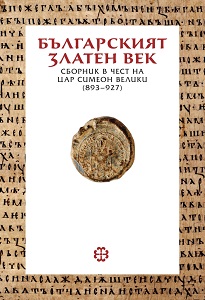

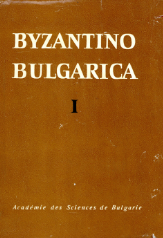
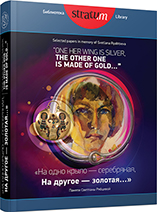
Keywords: Danube; Balkans; Crimea; Great Migration Period; East Germans;fibulae;
Big fingered fibulae of the East German tradition, such as Archar-Histria type, are addressed in this article. In the late phase of the Great Migration Period, they spread throughout the East Roman Empire, south of the Danube, as well as in the Crimea. These fibulae belong to the East German tradition of women's costume and date from the second half of the 5th — the beginning of the 6th centuries. Most likely, they spread from the northern part of the Balkan Peninsula along with migrations of the Goths to the West and the East. Perhaps, the finds of such fibulae in the Crimea (Luchistoe, Artek, Kerch) reflect one of the Gothic migrations from the Balkans, not recorded by written sources.
More...
Keywords: Ancient Russia; Uglich; Middle Dnieper basin; overlay;ornament;
A bronze applique depicting flying birds found during excavations in Uglich is dated to the first half — mid-tenth century and finds analogies among the materials from excavations on the Middle Dnieper sites. The applique from Uglich is, in our opinion, of considerable interest for the study of the development of the production of belt set in the period of intensive interaction between different cultural traditions in Eastern Europe and, along with other finds, quite expressively characterizes the special importance of the small town of Ugleche Field, quickly rising at one of the crossroads of migration routes from the neighboring and remote regions in the Volga-Oka interfluve.
More...
Keywords: Wallachia; Transylvania; 16th—17th century; pin jewelry; veil pin; brooch; hoarding
This paper examines five jewelry pieces provided with shafts from the Vlădiceasca hoard, Călăraşi County, Romania. Due to the rarity of iconographical and written sources, as well as the scarcity of this type of jewelry in archeological discoveries, the interpretation of the function of these items is quite difficult to make. In the first part of the article a short description of the hair pins preserved in the Vlădiceasca hoard and the presentation of the most important similar items found in archaeological context in Wallachia and Moldavia are made, in order to gather some function and style characteristics for these pieces. The second part of the paper is dedicated to the catalogue of the five pieces, which are classified according to their stylistic features, while also being compared with similar findings coming especially from the hoards discovered in the Moldavian space. Special attention is paid to the form in which they are published, some of the large pin jewelries being interpreted as brooches or as veil pins.
More...
Keywords: Eastern Europe; Middle Dnieper region; Dnieper Left Bank region; Early Middle Ages; women's costume; adornments; items of attire; “antiquities of the Antae”;historiography;
The paper identifies four stages of study of the women’s set of adornments and attire items existed in the Middle Dnieper and the Dnieper Left Bank region at the beginning of the Early Middle Ages. This set was reflected in hoards of the so-called antiquities of the Antae. At the first stage (end of the 19th century — 1920s), the accumulation and initial interpretation of the material took place. At the second stage (1930—1950s), “antiquities of the Antae” were considered mainly in the context of global ethnic and cultural and historical reconstructions. At the third stage (1960—1980s), Early Slavic sites were discovered in the Dnieper region. Women’s adornments and costume accessories were attracted to characterize the material culture of the early Slavic population. The modern fourth stage began in 1990s. Its distinctive feature is the formation of the concept on women's attire as an original historical source. Analysis of this source allows us to take a fresh look at some key points in the history of the Dnieper region at the end of the Migration Period.
More...
Keywords: Old Rus’; Upper Volga; finger-ring; typology; chronology; burial
The article presents the characteristic of finger-rings from the Old Russian burial monuments of Upper Volga basin. A typology of finger-rings is offered. It consists of classes, types and subtypes highlighted by morphological features of the hoop. The quantitative characteristic of finds of different types is offered. The predominant types are wire (including twisted) and rod finger-rings. The number of plate wide-intermediate finger-rings is considerable. Shield finger-rings and finger-rings with insert are rare for the Upper Volga. Single finds of plate finger-rings with a slit hoop come from a microregion close to the «Vyatichi area». The collection of finger-rings from Old Russian burial sites of the Upper Volga has similarities with the set of finger-rings from Belozerye and from Tver, where the wire and rod finger-rings also prevail.
More...
Keywords: Old Rus; Kyiv; three-bead templerings; ryasny; torc; depositary collection
The article presents the results of analysis of a few jewelry objects from the collection of the National Kyiv-Pechersk Historical and Cultural Reserve. All objects are introduced here for the first time. There are five silver three-bead temple rings, a fragment of so-called ryasny (riazni) –chains consisting of 8 blocks, and a torc. The author addresses their possible provenance, manufacturing techniques, ways of wearing head and neck jewelry sets as well as analogies, chronology and typology of the objects.
More...
Keywords: Volga Bulgaria; Samara Luka; jewelry; earrings; chains; breast jewelry; pendants;bracelets;
In the funds of the Samara Museum for History and Regional Studies named after P. V. Alabin there is a small collection of jewelry made of precious metals by the Volga Bulgarians of the 12th — early 13th century. The article describes items from this collection that originate from the sites of Volga Bulgaria in the Samara region. The range of jewelry products in Volga Bulgaria includes a variety of personal jewelry. A special place is occupied by items from the Zhiguli hoard, discovered on the Samara Luka and representing an outstanding example of Bulgarian jewelry art of the pre-Mongol period. These artifacts are evidence not only of the high level of development of the Volga Bulgarians’ metalworking craft, but also indicators of the level of artistic representations of society as a whole within the cultural traditions of the Muslim East.
More...
Keywords: Kievan Rus’; cross pendants; methodology; neutron and synchrotron radiography and tomography;3D models;
The article presents the experience of studying closed Medieval Russian cross pendants using modern nuclear physics methods: neutron and synchrotron radiography and tomography. The work was carried out on the equipment base of the National research center “Kurchatov Institute”. Non-destructive methods of analysis are described. They allow to determine the configuration of encolpions’ internal cavities without opening the leafs, to fix the presence of sacred relics, their nature and distribution in the cavities. The examples of research of 4 encolpions from the rural sites of Suzdal Opolie and Novgorod are given. 3D models of encolpions were built on the basis of tomographic sections. Some show the internal space of the crosses with the location of relics, others show the features of corrosion of the leaves. A special model was created for the black decor (niello) of one of the crosses. Building 3D models provides work with archaeological and museum artifacts at the modern high-tech level: scientific analysis, creation of virtual and real copies, demonstration for the promotion of cultural heritage objects.
More...
Keywords: left bank of the Lower Danube; 9th—10th centuries; Hungarians; Magyars; burial; plate-rosette
It is the first introduction of a funerary complex, investigated at the Vladycheni-I cemetery on the left bank of the Lower Danube. The only bronze plate with the image of an eight-petal rosette with a rounded projection in the center was preserved in the completely looted grave. This item, undoubtedly, belongs to the Hungarian artistic repoussage. This circumstance allows us to consider such finds (as well as their replicas on foil) as reliable markers of the early Magyars’ presence in the North-West Black Sea region.
More...
Keywords: Novgorod Land; medieval archaeology; chronology; Christianization; burial sites; funerary rite;decorations;
The earliest phase of the formation of the Russian funerary rites still remains poorly studied since there are practically no reliably dated sites up to the mid-11th century. Beginning with the mid-11th century, Russian inhumations appear throughout the entire Novgorod Land demonstrating diverse variants of the rite but remaining nevertheless within the frame of the Christian canon.A detailed dendrochronology has been developed for Novgorod archaeology, due to which the types of antiquities from the excavations of Novgorod are well dated. The same types of things were found in funerary monuments of the rural population of Novgorod land. These circumstances give us the opportunity to distinguish small groups of chronologically significant things among them that go out of use no later than the mid-12th century. They perfectly mark the initial stage of the old Russian funerary culture of the Novgorod Land.
More...
Keywords: Western Siberia; Late Medieval Age; Berezov town; leather objects; carabine holster (olstra)
In 2018, at the townsite (late medieval posad or suburb) within the modern urban settlement of Berezovo, in the north of Western Siberia, at the low reaches of the Ob River (Khanty-Mansi Autonomous Okrug, Tyumen Oblast), eight horizons of dwelling and economic buildings of the 17th—18th century were excavated. At estate no. 8, in the fifth building horizon, remains of a dwelling log-house no. 20 and adjoining log household building no. 20A were uncovered. In the latter building, in a layer of rotten straw and manure, a rare archaeological object was found — a leather carabine holster (olstra) with embossed decoration. The estate was functioning in the second half of the 17th century.The holster from Berezovo was the sevenths find of this kind of leather objects in the whole history of archaeological investigations in the Russian Federation. The holster is intended for carrying carabine on the shooter’s back or being suspended on the front pommel of the saddle. It was suspended with the help of belts run through holes in the holster, similarly to the finds from Moscow. To the Moscow find, the Berezovo find is close also in terms of its purpose — used for a carabine, as well as the decorative ornamentation with incised figures. This fact suggests that this object was manufactured by Moscow artisans.
More...
Keywords: left bank of the Lower Danube; 60s. 20th century; childhood environment; colouring; amulets; martenitsa; sarma; boys’ games; arshitsi; small knives; Turkic traditions
The author addresses artifacts of traditional culture shared by the Bulgarians from the left bank of the Lower Danube in 1960s. He reviews some peculiarities of this environment, which gradually introduced children to the adult world. These were the things that protected the growing generation from the harm and secured their health and wellbeing. The author describes the differently colored amulets (martenitsa) and wedding frippery (sarma). Special attention is paid to boys’ games, such as dice (arshitsi) and knives, which reflected some centennial values of the Turkic nomads. Particularly, this concerns analogous use of cold weapons and their transmission from generation to generation.
More...
Keywords: Vettersfelde; Witaszkowo; hoard; Scythian period; Cyzicus;animal style;
Among all the hoards consisting the ceremonial akinakai the assemblage of items discovered in 1882 near the Vettersfelde village is the most reliable. It contained richly decorated golden objects in conventional geometric and animal style. Judging by the plots presented on the objects in the animal style like a fish-shaped plaque, a clover-shaped phalera and a scabbard of a sword, they make up a solid ensemble, most likely made simultaneously in one workshop. Most scholars have dated the hoard within the framework of the late 6th — early 5th centuries BC, at the same time, among all of the objects of this set of items, the sword occupies the earliest part of the chronological range. The manufacturing of hoard items from Vettersfelde is usually associated with the Milesian colonies of the Pontic region, while for the artist certain bilingualism is documented, allowing him to use both Greek and barbaric expressive means — pairing, symmetry, repetition and antithesis, among them. Most likely, the choice of metaphors for the narrative was not accidental, and, undoubtfully was recognized both by its performer and the recipient, but the metaphor of the lion hunting deer was apparently the main one and therefore is repeated on all objects of the zoomorphic ensemble. If the localization of the hoard production is moved beyond the northern or western coast of the Black Sea, then it can be noted that the Milesian colonies of Eastern Greece can also claim the role of a source of origin for Vettersfelde hoard. In particular, according to many parameters, Cyzicus is suitable.
More...
Keywords: Old Russian state; Gnezdovo; Ladoga; Scandinavians; Varangians; Slavs; horseshoe fibulae; sundress; toponym; etymology;trade;
The paper presents some thoughts on the issue of archaeological data interpretation (concerning women’s jewelry) in the context of processes that led to the formation of Old Russian state. The author critically considers the ideas about the “Scandinavian control on the Baltic-Volga trade route” and “Scandinavian colonies” in the Eastern Europe. The author raises also a question on the initial political status and real role in the formation of the Old Russian state of the emerging trade-specialized settlements in the Ladoga and Gnezdovo.
More...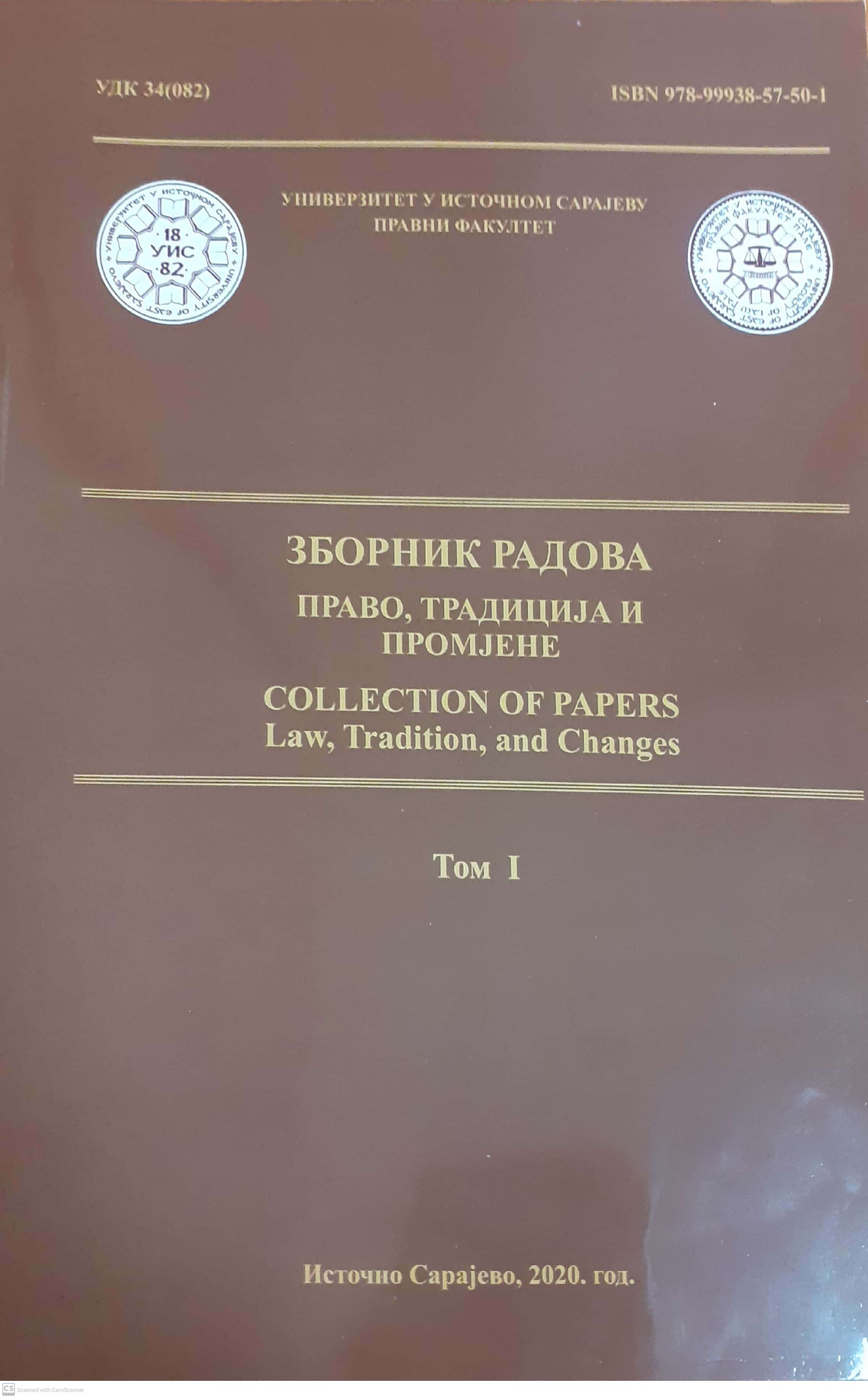
Keywords: Revolution;Serbia;Democracy;Statutory law;People;Forms of government;
The subject of the research is the reception of ancient legal and political ideas by Serbian intellectuals who actively participated in the First Serbian Up- rising (1804-1813) and in the creation of the ideology of the Serbian Revolution. They generally accepted the theory of social contract according to which the state is not an abstract term separate from the people who make it, that is, it is equated with the community of citizens. Serbian scholars knew about the forms of government that existed in classical antiquity, and they accepted the division of forms of government into monarchical, aristocratic and democratic, just like some fundamental legal principles of Roman law, such as equality of citizens before the law and the rational and ethical character of law. Also, defining the concept of law as an expression of the people's will expresses the influence of the analogous concept of Roman law.
More...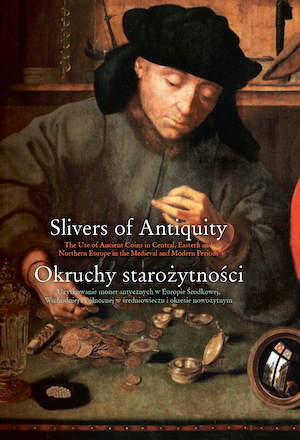
Keywords: Roman coins; archaeology; coin-pendants; long term; past in the past
This article aims at understanding the presence of Roman coins in Viking, medieval and modern period Sweden from an archaeological point of view. It considers all sorts of finds comprising Roman coins, as long as the contexts in which they occur can be dated with sufficient precision. Four main phases are distinguished: early Viking Age ( Phase I: c. 750–990), late Viking Age (Phase II: c. 990–1150), Medieval period (Phase III: c. 1150–1500) and Modern period (Phase IV: c. 1500–c. 1800). Differences in quantity, use and perception clearly emerge between phases. These differences seem to depend mainly on the socio-economic context and the amount of information available for the coins. The fact whether the Roman coins were kept in circulation since they were brought to Sweden in Roman times, were rediscovered at ancient sites or were imported at a late point also seems to have played a very important role in how these coins were perceived.
More...
Keywords: Roman coins; Balts; silver hoards; medieval context; modern context
Individual Roman silver coins have been identified in early medieval silver hoards practically everywhere in Europe. However, depending on the region, this phenomenon displays some distinctive features. The largest concentration of Roman coins in early medieval hoards is observed in Scandinavia and in the territory of present-day Poland. In the eastern Baltic region, single denarii have been recorded in finds from the Sambian Peninsula and other parts of Lithuania and Latvia in areas with a greater concentration of Roman period archaeological sites associated with the Balt tribes. Also recorded here are several hundred Roman bronze coins thought to be associated with the amber trade. The largest number of these bronzes is in the territory settled by western Balt tribes; there are more modest numbers in the area settled by eastern Balts. During the Migration period, the flow of Roman silver coins was much smaller. Despite this, single Roman denarii have been recorded in hoards of early silver. These denarii are unlikely to represent early medieval finds picked up on sites of the Roman period, and were probably imported to the region with other silver. In the present study, I propose to establish the time and the source area of the Roman denarii flow to the territory of the Baltic states where subsequently they were deposited in hoards alongside with early medieval silver (coins and/or ornaments).
More...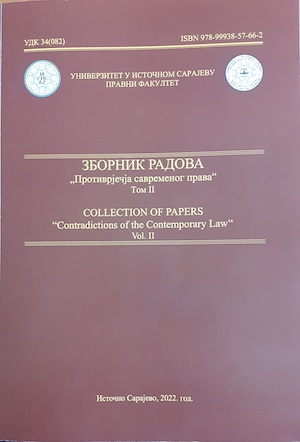
Keywords: Autocephaly; Romanian Orthodox Church; Nationalization; Statehood; Independence; Recognition;
Unlike modern states which are founded on the values of the French revolution (1789), Church has always been marked by tradition and absolute identification with national interests.Ecumenical Patriarchate of Constantinople officially recognized Romanian Orthodox Church in 1885 when Ecumenical Patriarch issued act formalizing this decision. In reality, autocephaly of the Romanian Orthodox Church, spread to Transylvania as well, in the sense of independence existed in Middle Ages and as such was confirmed on several occasions by Romanian leaders (rulers, the last of which Dimitrie Cantemir, several years before establishing the Phanariot rule in Romanian lands).
More...